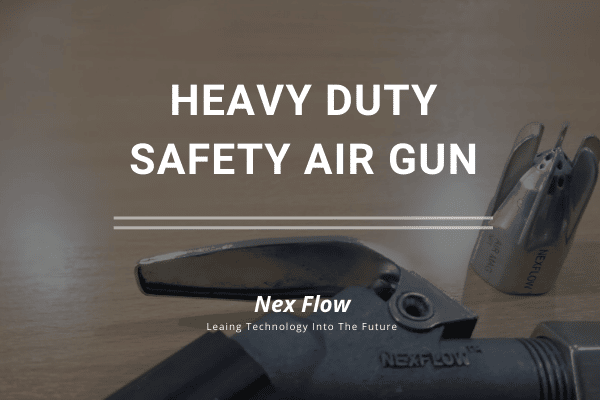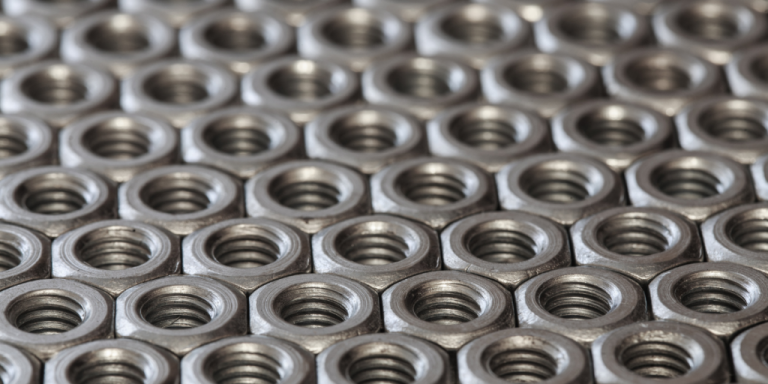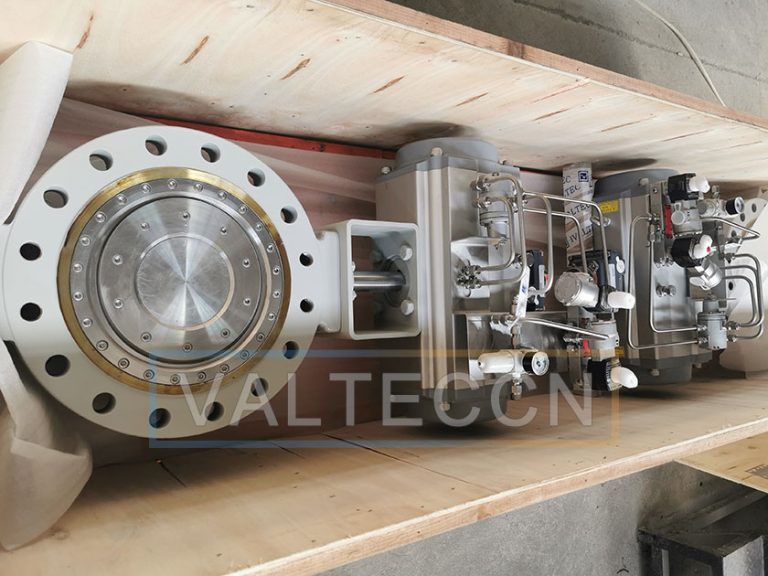The Conflict Over Residential Fire Sprinkler Requirements, Part 1
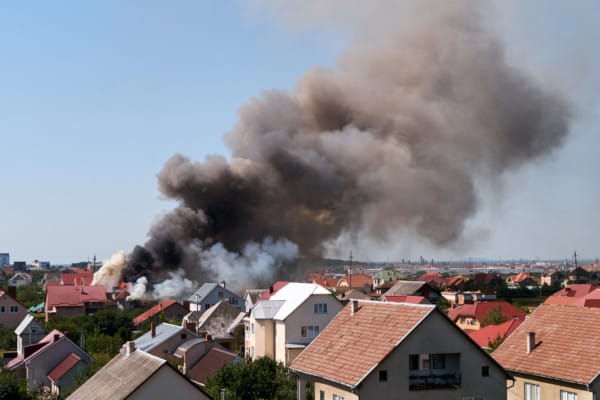
#226 – The Conflict Over Residential Fire Sprinkler Requirements, Part 1
Support for residential fire sprinklers laws are bolstered by a track record of safety
Fire sprinklers have been commonplace in commercial buildings since the 1960s and in commercial-residential structures (hotels, apartment buildings, and condos), since the 1990s. But whether they should also be required in new single-family homes and duplexes has been debated for years, often pitting fire departments and safety groups against the real estate and construction industry.
Although smoke alarms have helped significantly reduce death and injury over the last 40 years, fire officials are seeing the trend begin to level out. They want to bring in an additional solution that actively does something to stop or slow a fire: the automatic fire sprinkler. Much like their commercial counterparts, residential sprinklers are highly effective at saving lives and property.
The National Fire Protection Association (NFPA) reports that homes with sprinklers have an 81 percent lower civilian death rate than homes without them, and 31 percent fewer civilian injuries. When fire sprinklers AND hardwired smoke alarms were present, the home fire death rate was a whopping 90 percent lower.
Building codes provide a framework for new mandates
Model building and fire codes have been actively updating residential fire sprinkler requirements over the past two decades, starting with commercial-residential buildings, then expanding to include townhouses and ultimately extending to include all new one- and two-family dwellings as early as 2009.
Forty-nine states and the District of Columbia use the International Residential Code (IRC) for single-family-home construction. This wide-ranging residential code sets minimum design and construction guidelines for one- and two-family homes and townhouses. The 2009 and 2012 editions of the IRC joins NFPA 101: Life Safety Code and NFPA 5000: Building Construction and Safety Code in requiring fire sprinklers to be installed in all new homes. NFPA codes have included this since 2006.
As a model code, the IRC is intended to be adopted in accordance with local laws and practices. Each state adopts the new code over time—some may take up to 10 years or more to implement a new version of it—and states can reject specific parts of the adopted code for their particular jurisdiction. This is why residential fire sprinklers are not required in most areas, despite the mandate to install them in the latest editions of the IRC.
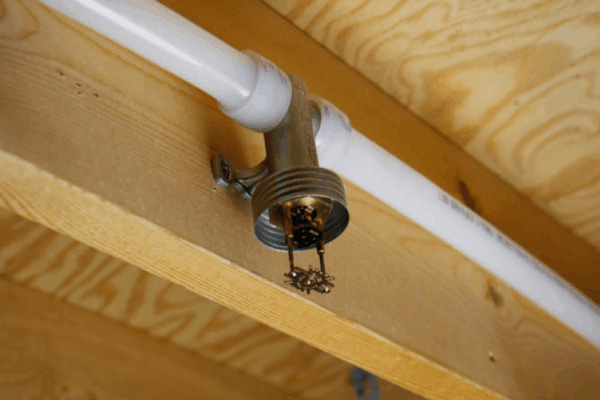
Residential fire sprinkler requirements face relentless opposition
Despite their effectiveness, NFPA reports that sprinklers were present in only seven percent of reported home structure fires between 2010-2014. The Fire Protection Research Foundation estimated that only about six percent of U.S. homes were equipped with them in 2013.
These statistics raise the question: If fire sprinklers are so effective at safeguarding lives and property, why aren’t they routinely installed in homes?
To date, housing and building industry groups have been instrumental in spearheading efforts to block sprinkler mandates in at least 25 states. In New York, builders and real estate agents took the lead in opposing mandatory sprinkler requirements in new homes, and in Texas, a retroactive statewide ban overturned at least one city’s sprinkler requirement. Former New Jersey Governor Chris Christie twice vetoed sprinkler requirements approved by the legislature. In Minnesota, builders took their battle to court to get the state’s code change reversed.
Bowing to the wishes of national and local home builders groups, Kansas, Missouri and 27 other states have enacted laws in recent years prohibiting local governments from passing their own fire sprinkler requirements for residential homes. A number of other states have elected to let local jurisdictions decide whether to adopt the sprinkler standard. Currently, most states do not require sprinklers.
While homebuilder groups have been successfully blocked many IRC sprinkler provisions, one notable exception is the state of California, where the IRC has been adopted with the residential sprinkler requirement included. The requirement, effective since January 2011, is estimated to increase the cost of a new home by an average of $5,000, according to the California Building Industry Association―an additional expense they claim will dampen an already sluggish housing market.
Supporters of the mandate, on the other hand, argue that it is an essential safety measure that will protect homes and people, especially in the wildfire-prone state of California. And an extra cost of $5,000 over the course of a 30-year mortgage adds only about $20 per month to an average loan payment.
Maryland and the District of Columbia are the only other U.S. jurisdictions where the requirement for builders to install sprinklers in new one- and two-family homes have been adopted. Other states, including South Carolina, New Jersey, and Pennsylvania, came close but ultimately were unsuccessful―at least for now.

Installation costs are a flashpoint in the residential fire sprinkler debate
Even though sprinkler requirements are nationally recommended, housing industry groups believe the mandates are too costly and burdensome. In the U.S., the home-building industry spent $57 million over a 10-year period in an effort to block plans to require sprinklers in new homes―and in many cases, it has been highly successful.
In some instances, homebuyers have effectively resisted the mandatory requirement. For example, Pennsylvania added the sprinkler requirement to its statewide building code in 2011. Pennsylvania is a relatively rural state and many of its residents have limited access to public water systems. Many wells provide insufficient pressure for sprinklers and the alternatives, such as installing pumps or dedicated gravity tanks, add to the expense. The residents of the state successfully lobbied their representatives (with support from the Pennsylvania Builders Association) to repeal the IRC sprinkler requirement and home building resumed in the state―sans sprinklers.
The Fire Protection Research Foundation calculates fire sprinkler installation cost at about $1.35 per square foot. However, estimates from opposition groups are much higher—up to $5 per square foot. Housing industry groups argue that mandating sprinklers in all new homes would hike the price tag enough to put thousands of potential buyers out of the market and stifle the industry.
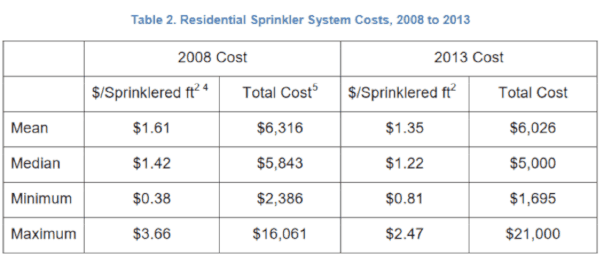
Proponents argue that home prices are more closely linked to underlying market conditions and other variables rather than simply building and materials costs. In addition, with new homes constructed in California, Maryland, and DC now equipped with sprinklers, little evidence suggests that the housing markets in these areas have been negatively impacted by the sprinkler requirements.
In fact, some areas of California saw sprinkler installation costs drop to less than $1 per square foot, and incentives for developers across the country—such as the reduced street width and higher density of structures that can be realized when installing sprinklers—further lower costs and increase ROI. The Home Fire Sprinkler Coalition (HFSC) has a great rundown of the incentives for developers and builders.
Stay tuned for a closer look at local battles over residential fire sprinklers
Residential sprinkler requirements remain a controversial subject in many regions in the U.S. And the ongoing debate gives onlookers an instructive lesson in the politics of public safety. In the next installment of this series on fire sprinkler code and legislation, we will closely examine at how various states and cities have enacted fire sprinkler ordinances and laws—or in some cases, resisted their passage.

If you’re an installer or homeowner looking to buy components for a home fire sprinkler system, check out QRFS’s selection of residential sprinkler heads, as well as our dedicated residential risers.
If you have any questions about retrofitting an existing structure or need help finding an item, give us a call at 888.361.6662 or email support@qrfs.com.
This blog was originally posted at blog.qrfs.com. Check us out at Facebook.com/QuickResponseFireSupply or on Twitter @QuickResponseFS.
